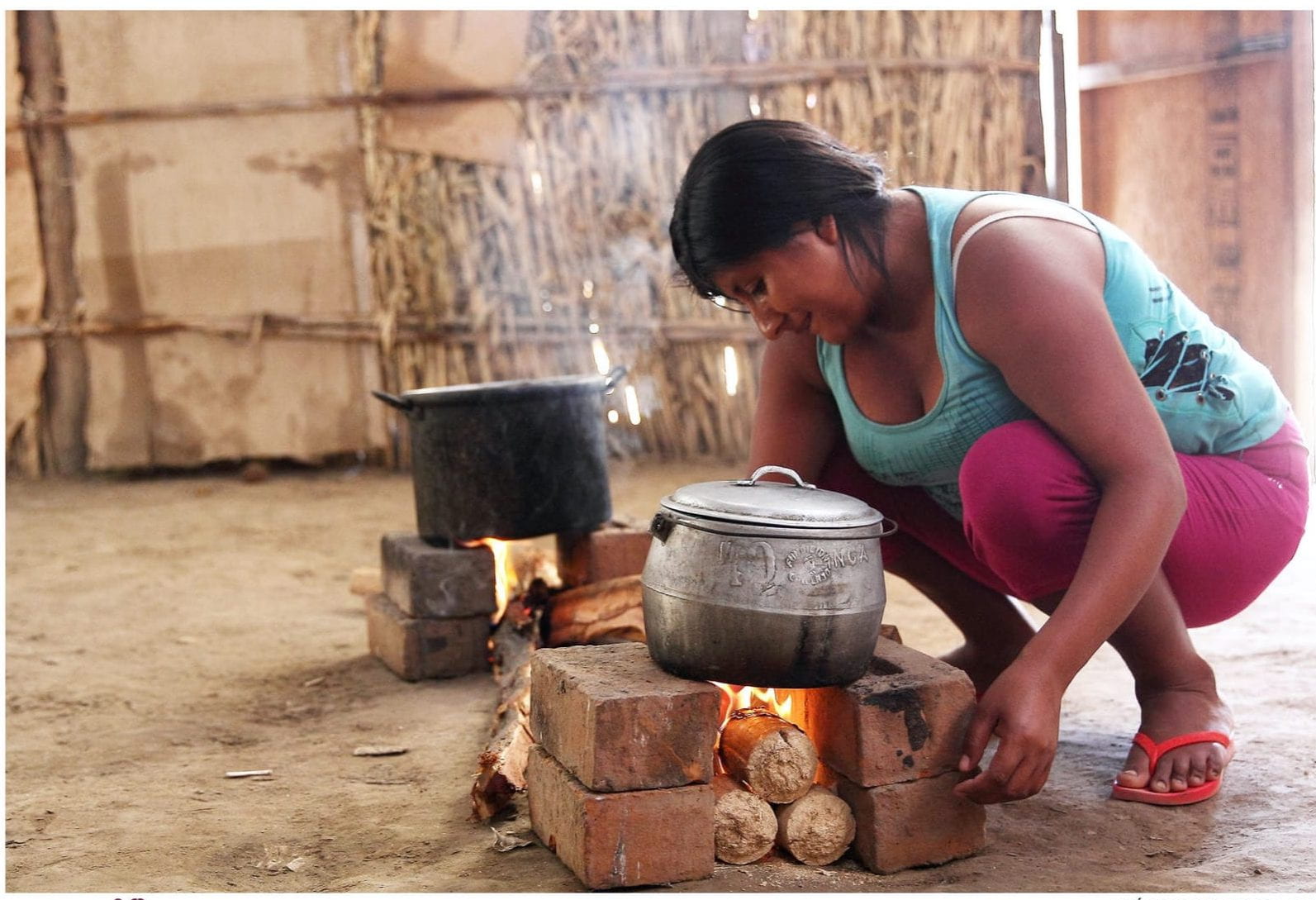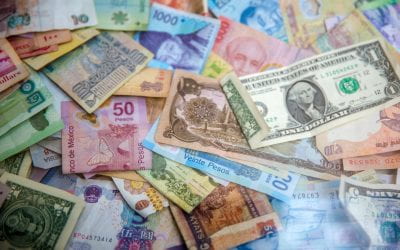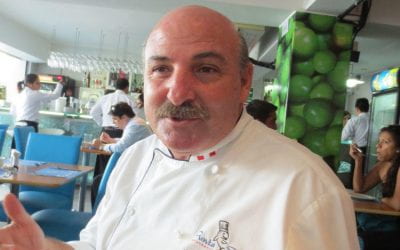Dismantling the Boom of Peruvian Cuisine
From the Plate to Gastro-Politics
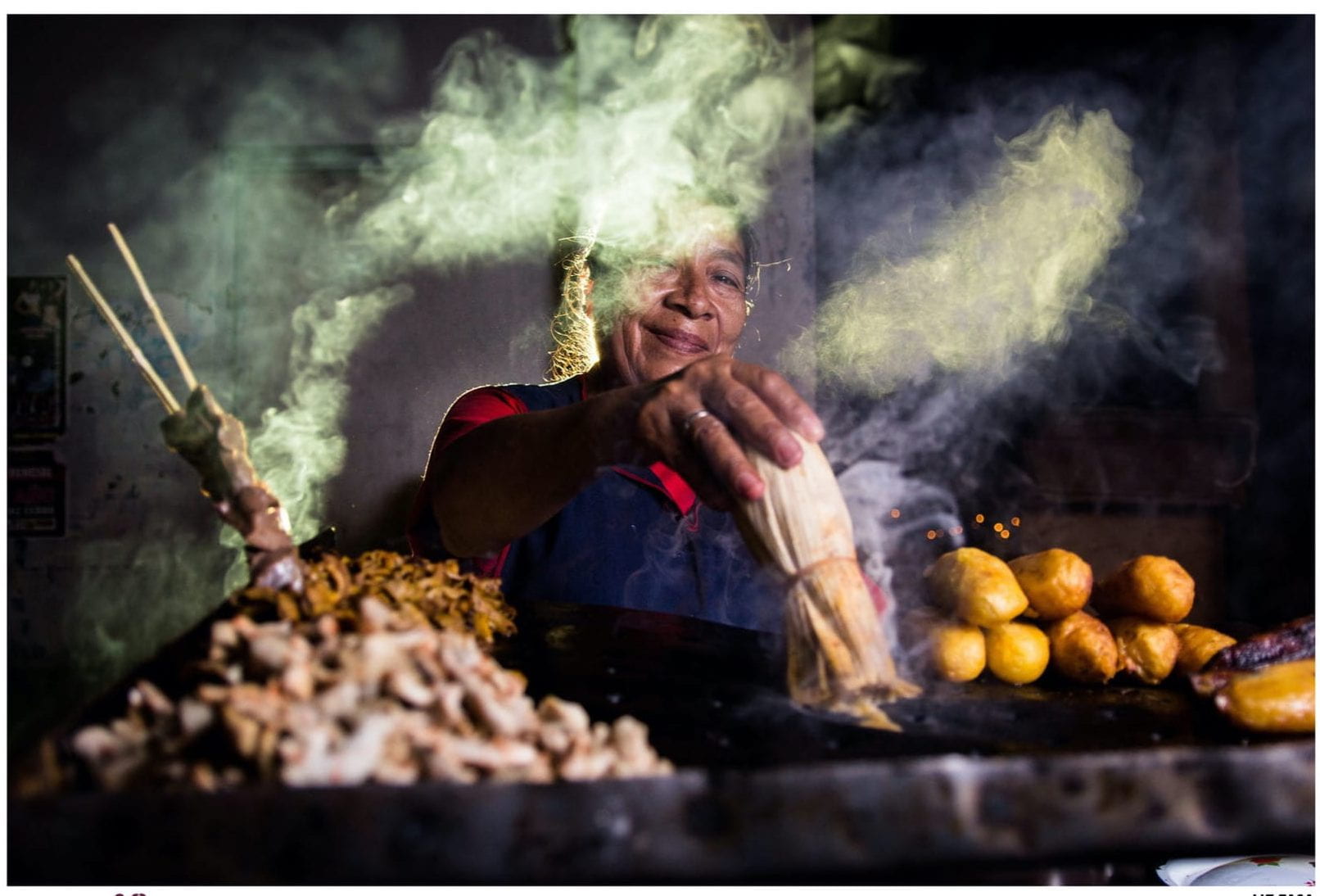
“Mariña Margarita Solano, Vendedora de Anticuchos.” Photo by Liz Tasa, from colección, “Los Rostros del Perú,” Piura-Ojos Propios/Reniec.
I really enjoy Peruvian food, as much as I like doing research related to it. The fact that in my country cooking crossed from being simply itself to becoming a political and social phenomenon entices me intellectually. Indeed, there is a lot to say about the reasons that drove 80,000 youth to attend Peru’s more than 80 culinary schools, that catapulted chefs to fame and glory, that led the government to establish national days to celebrate local specialties (ceviche, pollo a la brasa, and pisco sour), and that provided chef Gastón Acurio with a chance to become the country’s next president. However, less and less do I enjoy talking about Peruvian food with acquaintances, friends and relatives. What annoys me is the foodies’ arrogance and the almost religious passion with which they try to convince me that Peruvian cuisine is now the best in the world, and, indirectly (I can feel it), urging me not to be critical of it in my comments. And I will not; food is never to blame. However, all of this inspires me to seek to understand and dissect such a stunning enthusiasm about Peru’s “national food.”
Peruvians’ obsession with everything that has to do with “their” food manifests indeed in everyday expressions of national pride. Local media play a chief role in this, relating successful adventures in gastronomic entrepreneurship while building a sense of (food) community in which individual strengths become a public good. Indeed, the wide dissemination of flattering news about local heroes in toques follows a tendency that projects individual into national achievements, as in sport competitions. This way, Peruvians do not need to wait to celebrate the too infrequent goals of the country’s soccer team. Instead, they puff their chests with every fancy restaurant opened by Peruvians in major cities—even if they could hardly enjoy one of these places—such as Virgilio Martínez’s Central, Gastón Acurio’s Astrid y Gastón, and Pedro Schiaffino’s Malabar, distinguished among the top restaurants of the world.
The exaltation of an alleged uniqueness, excellence and superiority of Peruvian cuisine has set the table for culinary nationalism, hence, too, a climate of competition within which Peruvians are particularly confident, but always with a chance of turning chauvinist and unfriendly if someone openly dislikes the tastes venerated by nationals. Nobody is immune to the effects of culinary nationalism as it takes form today in Peru. Not even reputed public figures are protected from the fervor of the most vindicatory and self-assigned custodians of Peruvian food: the common citizens. What better example than that of Iván Thays, who passed from being an internationally recognized Peruvian writer to becoming, in his own words, “the most hated person” in the country, only on account of sharing his personal, critical view of Peruvian food in his blog? Thays was vilified by many Internet users as a traitor to the country, as an anti-patriot, and also as a Chilean citizen (that, in this context, is merely an insult). Such a lynching revealed the dark side of a taken-for-granted benign nationalism as well as the limits of the promotion of national self-confidence. However, besides the pettiness of the attacks against Thays—taking place in a country where a man of letters is not precisely an influential leader of opinion—the media storm raised by the writer and Italian food-lover is useful to reveal how Peruvian cuisine is currently redefining the public understanding of the concepts of nation, identity and citizenship.
Yet, and fortunately, Peruvians’ pride in their national cuisine is not mainly based on chauvinism and nationalism unleashed by mass media. I would argue instead that it stems primarily from longstanding knowledge and culinary awareness constantly updated by all practitioners (professionals or not), just as in the many other “culinary countries.” Advocates of Peruvian food may bolster their arguments by making reference to a complex culinary history that encompasses crops and practices resulting from the meeting of pre-colonial heritage with the legacy of centuries of immigration from various parts of Europe, Asia and Africa. It made for a mélange of powerful, delicious spicy flavors, they may argue, and quite rightly. However, all this does not make Peruvian cuisine intrinsically better than other national cuisines. Cuisines and gastronomies, all of them, are built on subjective criteria of quality, authenticity and value: they are at once social constructions, market products, and ubiquitous topics in everyday life—everyone has something to say about the pleasures of eating. In this sense, we might expect that the relative importance of a particular food trend, be it purely a chef’s invention or a national cuisine, rises and falls over time. At least this is the feeling that I had when I read in newspapers and magazines that Peruvian cuisine is the “Next Big Thing”: there will always be a next one…
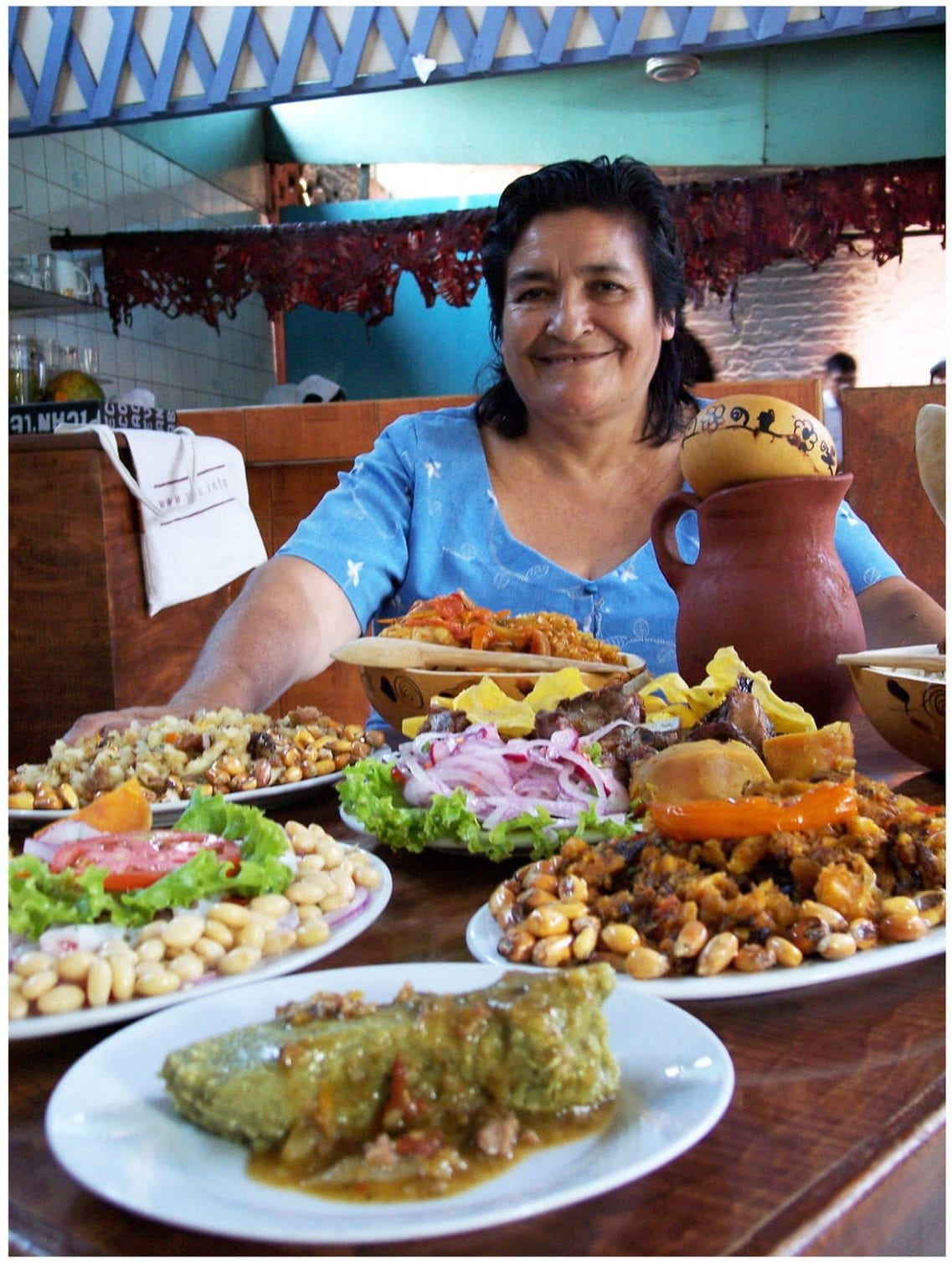
“Los Potajes de la Chayo.” Photo by Miguel Arreategui, from Colección “Los Rostros del Perú,” Piura-Ojos Propios/Reniec.
I therefore propose to think of the rise of Peruvian cuisine in relation to a variety of historical, cultural and economic factors—not all of them directly related to food—rather than to a supposed culinary essence that leaves room to subjective evaluations and to the formation of myths. So, and without wishing to spoil the fun of many of my co-nationals, I will attempt a short sociological explanation of the gastronomic boom based on facts rather than on emotions.
First of all, what is known as the “Peruvian gastronomic revolution” cannot be dissociated from recent changes in Peru’s society and politics. Not long ago, the country was not particularly attractive to visit. The 1980s and 90s were times of civil war and economic crisis. Now the war is ended, tourism is strong and so is the economy. A decade of continued economic growth increased the purchasing power in the main cities, principally in the capital, and placed Peru as an emergent actor on the global scale. In such a context, the interest in gastronomy, one expanding aspect of urban economies, is anything but surprising.
These contextual factors matter as much as the changing trends in gastronomic business models and activity worldwide. The incursion of Peruvian food from the domestic into the productive and public sphere was facilitated by the professionalization of cooking in Lima, both through the creation of occupational associations and the increasing attractiveness of gastronomy as a profession. The latter phenomenon is linked to the rise in the social recognition obtained by chefs during the 1970s and 80s in Europe and the United States, when leaders of French nouvelle cuisine and fusion cuisine, respectively, became heads of their own restaurants. From then on, the gastronomic business grew in importance as a key component of the cultural industry, while cookery increasingly gained respect. Although gastronomy has, over the years, become a highly competitive market in which compensation and reputation concentrate in a few top performers, chefs’ self-marketing strategies that made superstars of some have encouraged, in many places as in Peru, the opening of restaurants and an increase in publications, TV shows and culinary institutes.
Old images of sweaty, grumpy and overweight restaurant cooks vanished, replaced by thin, fashionable and smart chefs: also gone was the notion of cookery as a risky and harsh career, associated with subordinate, servile tasks. On the contrary, qualified culinary skills are now acknowledged as accomplishing important social and economic functions. The commitment of young people to professional gastronomy was thus crucial to building the prominence of Peruvian cuisine as a legitimate cultural field and as a profitable economic activity. The most visible leaders of the Peruvian gastronomic boom were (and still are) sons of well-off families who had the opportunity to receive European and North American culinary training during the 1990s. Even though some of them had to overcome parental resistance (Acurio’s story is very well known), the diversification of sources of social prestige among the very conservative Peruvian upper class was already underway: Lima’s elite finally understood that in the modern world prestige could be more easily reached by becoming media personalities rather than by sticking to anachronistic imperatives of distinction. The social background of these young cooks was, however, crucial for them to become elite chefs, since it allowed them to speak with authority about their revisitations of Peruvian cuisine. Indeed, they have not had to face social or cultural barriers when they addressed novel creations, unconventional native ingredients and stylistically daring tours de force to their clients (and social peers): family background softened the task and avoided suspicions. Therefore, it would be not unfair to say that their first successes were equally due to their individual skills and their privileged social positions.
Technical knowledge, local biodiversity and the ability of traditional elites to invoke their privileges in changing contexts combined to allow local foodies to vaunt the diversity and versatility of Peruvian cuisine. Key in this endeavor is the use of native Andean and Amazonian food and ingredients. Elite chefs constantly re-appropriate and re-signify long-marginalized indigenous food items within gastronomic techniques and discourses—but in doing so they displace indigenous knowledge. In other words, these highly trained professionals translate local, traditional or remote culinary knowledge into high, cosmopolitan canons. That way, items kept away from elite tables since ancient times, such as guinea pig, paiche, arracacha or cushuro,obtain a higher status. Native food gentrification is achieved in steps: first by removing an item from any prior context—thus neutralizing its indigenous and lower-class characteristics—then by identifying some of its desirable attributes and, finally, by connecting it with elements from other culinary cultures, in particular those which already enjoy global recognition. It is all about neutralizing a “negative exoticism” with the aim of proposing, afterwards, a “positive exoticism.” That is how Peruvian cuisine moved into a broader dimension, nourished national and international expectations and encouraged vocations. And so it boomed.
Celebrating others’ successes is not bad; it could certainly be inspiring. But does the good that is happening to a certain number of cooks really justify the elevation of one type of cuisine over others and, furthermore, serve to inspire national pride? I find this question pertinent since some Peruvian top chefs do not necessarily attribute the dishes they serve to Peruvian cuisine; they prefer to say that they offer “dishes with personality.” So how has “national” cuisine become so central in the life of Peruvians? My explanation is that when the gastronomic boom struck a decade ago, Peruvian cuisine suddenly joined Machu Picchu as a “destination,” since cuisine also has the capacity to involve people with a country on a sensory level and to attract tourist dollars. Indeed, in a world that promotes multiculturalism and markets ethnic identities, food has become an avenue for societies aspiring to gain international visibility and economic capitalization. To such ends, state and private actors such as the Ministry of Culture, trade unions and entrepreneurs used the appeal of Peruvian cuisine as a means to enhance the country’s reputation and foster business. Food then burst into the political arena in ways whose social consequences have yet to be determined. Actors from different sectors now commit to implementing food-related economic and social initiatives. Trade unions promote restaurant creation abroad and support the modernization of traditional agricultural production to compete in global markets. Celebrity chefs showcase native ingredients while moving up in the rankings of top creative chefs. Meanwhile, diplomatic efforts are made for Peruvian cuisine to be listed by UNESCO as Intangible Cultural Heritage of Humanity.
In just over a decade, Peru has become a food nation. But the implications of this phenomenon extend far beyond the plate. After celebration, it is time now to get closer to the many concerns that the gastronomic boom has raised in order to turn triumphalism into a real triumph to be proud of.
Related Articles
Peru: Editor’s Letter
I’m long past the point of being a tourist in Peru, although I’ve never lived there. I first arrived by bus in 1977 on an Inter American Press Association fellowship and I’ve been going back ever since. I’ve explored its cities, mountains, jungles, lakes and beaches…
Making a Difference: A Look at Microfinance
I spent ten months working for Natik, a small non-profit organization that supports grassroots organizations around San Cristóbal de las Casas and Santiago Atitlán, Guatemala. One of these projects is a microfinance fund called Veredas…
Fusion and Identity
I grew up far from Lima in Talara in the Piura region, a northern Peruvian city with stunning beaches that just happens to be the westernmost city in all of mainland Peru. The city enjoys an abundance of fish and shellfish, as well as large oil reserves. The International Petroleum Company (IPCo) settled in Talara in the 1950s, and my father (of Swiss-Peruvian descent) worked for this oil company as a geologist.

